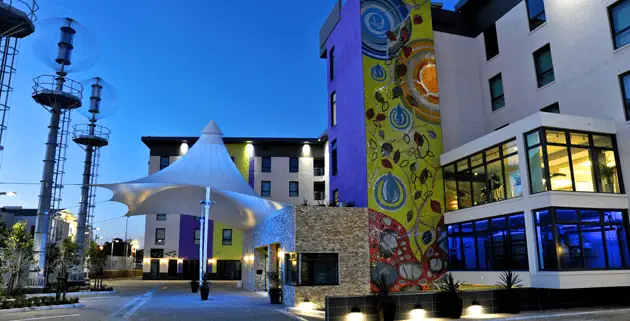Tourism Safety Communication in South Africa
A focussed public-private partnership approach for the South African tourism industry to positively inform potential visitors on safety and security issues is imperative for the country to compete as a safe destination on the global tourism stage. Here’s the Who, What, Why and How – what’s missing is the When. By Des Langkilde.
Search the web using the title of this article as keywords and you will find that the top results deliver negative advice regarding the country, primarily emanating from travel advisory websites such as gov.uk (alarmingly, the UK is one of South Africa’s key inbound markets), USA Today and TripAdvisor.
Negative terms such as rape, crime, murder, vehicle hijacking, robbery, ATM fraud, and luggage theft predominate. USA Today starts its ’Travel Tips’ advisory with: “High violent crime and murder rates have earned South Africa a reputation as a dangerous destination…”
And local travel websites are no better. An analysis of eight South African public sector tourism websites that deal with safety issues shows that in most instances warnings are phrased in a negative manner, i.e. “do not”. In many cases, the safety and security information is hidden behind other information aimed at marketing the destination. With the exception of the provision of emergency numbers, virtually no advice exists on how to respond to various types of victimisation. In other words – if you have been a victim of card fraud, follow these steps, or if you had your passport stolen, then these are the steps to follow.
The author of the above analysis, Ian van Vuuren – Project Consultant, Tourism Safety Initiative (TSI), Tourism Business Council of South Africa (TBCSA), suggests a focussed public-private partnership approach for the South African tourism industry to ultimately achieve the following:
- Develop a common “macro” message that can be replicated at national, provincial and city levels.
- From this generic message, more specific messages may be developed by local authorities, tourism product owners and service providers.
- These messages should in all cases phrase matters, as far as is possible, in a positive manner, i.e. “do” instead of “do not”.
- Links would be provided for support of various types, across all sites, i.e. emergency responders, trauma councillors, translators, embassies, banks, etc.
- Develop common ways to respond to specific types of emergencies. These messages should be developed in a “fun” manner, i.e. interactive colourful posters that integrate normal tourism information with safety and security information in a seamless manner.
In the final analysis, van Vuuren concludes that “What is required to counter negative perceptions of South Africa as a tourist destination is a joint, integrated strategy on how to handle the communication of safety and security messages horizontally and vertically throughout the tourism spectrum in a fused public and private sector approach”.
On the issue of providing safety and security information, the business tourism sector fares no better than its leisure tourism counterparts.
A search for the terms ’safety’ and ‘security’ on the South African National Convention Bureau website delivers zero results. This despite the fact that the country has an excellent track record for hosting international events, and has hence gained experience in managing safety and security issues.
Responding to a travel safety alert issued by the US Embassy in Pretoria on 04 June 2016 (relating to ‘Threats to Shopping Areas and Malls’), Tourism Minister Derek Hanekom issued a press release to reassure travellers to South Africa of their safety, by saying: “The alerts issued periodically by other governments to their citizens around the world as a standard precautionary measure have been noted. We can understand that alerts of this nature may cause anxiety and fear amongst some travellers and members of the trade who want to advise their clients responsibly. Tourists to South Africa should be aware that our security services are working with their counterparts in countries around the world on these concerns, and are liaising closely with our business community to secure the safety of our citizens and visitors.”
I am astounded that Minister Hanekom did not take the opportunity in his statement to refer readers to the TSI website, which has a reasonably comprehensive list of ‘Traveller’s Tips’ advice.
Being a private sector initiative, the TSI is partly funded by the TBCSA through funds generated by the TOMSA tourism levy, which the TBCSA administers. Why then has the TSI not been tasked by the TBCSA to deliver the ‘integrated strategy on how to handle the communication of safety and security messages’ goals as outlined by van Vuuren? I originally published van Vuuren’s article ‘Tourism Security: A Comparison on Safety Tips’ in May 2016 and re-published the article again in January 2017.
Come to think of it, why has South African Tourism not taken the lead by creating a ‘safety & security’ page on the ‘travel trade partners’ website that links to the TSI website? I even checked the ‘related sites’ section of the trade website and see no mention of the TSI at all. In fact, there’s no mention of, or link to, the TSI on the TOMSA website either. Doesn’t say much for industry collaboration!
I’m sure that many private sector inbound tourism marketing websites, who collectively reach out to millions of potential visitors, would be happy to create a link to the TSI website for safety and security advice if the information is as positive and concise as van Vuuren alludes to.
In conclusion, for South Africa to compete on the global tourism stage as a safe destination, it is imperative that safety and security issues are communicated to prospective tourists and event planners in a positive and proactive manner. And that both the public and private sectors of the South African tourism industry collaborate to get the job done.




